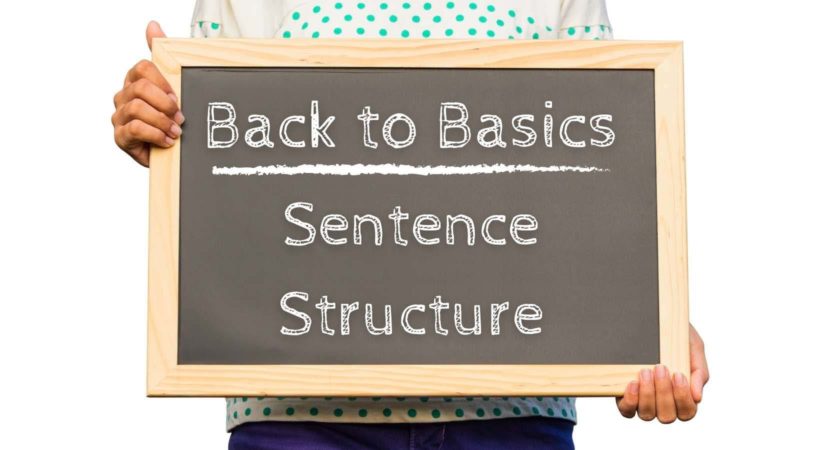
Back to Basics: Sentence Structure
Welcome to our Back to Basics series! In this series we explore some of the foundational methods, practices and terminology for teaching reading and writing. This series is for those new to the field of literacy, beginning tutors or those who would just like a refresher. This week we discuss teaching sentence structure.
The ability to understand text at the sentence level forms the basis of understanding and communicating ideas with the written word. When learners are confident writing letters and have developed early literacy skills, they can progress to writing sentences. When we talk about sentence structure, we must also talk about syntax. Syntax is the study and understanding of the arrangement of words, phrases, and clauses that make up a sentence. A closely related term is syntactic awareness.
“Syntactic awareness means having the ability to monitor the relationships among the words in a sentence in order to understand while reading or composing orally or in writing.” – Joan Sedita
There is a close relationship between a learner’s syntactic awareness and their reading comprehension and writing ability.
Teaching Sentence Structure
Many emerging writers struggle to create complex sentences. That is why writing complete sentences should be explicitly taught. One way to start is to teach what makes up a sentence:
- a group of words that expresses a complete thought that can stand alone (independent clause)
- starts with a capital letter
- has spaces between each word
- ends with punctuation (period, question mark, or exclamation point)
- contains a subject (someone or something) and a predicate (what the someone or something is being or doing)
The next stage could be learning about the three main sentence structures:
- Simple Sentence: One independent clause with a subject and a predicate.
- Compound Sentence: Two or more independent clauses joined together by a coordinating conjunction (i.e. and, but, for, or, nor, yet, so).
- Complex Sentence: Contains at least one independent clause and one dependent clause.
While teaching traditional grammar rules and syntax is important, recent research has shown that other methods for teaching sentence construction, such as sentence combining, have proven more effective.
“Readers must be able to understand sentences, but they must do so like proficient language users, not linguists. If a student can construct sentences that make sense and tease out the meanings of those sentences they confront in texts, then I don’t care much whether they can explain the difference between an infinitive and a participle or know what a gerund is.” – Timothy Shanahan
The teaching methods you choose will differ depending on the learner you are working with. There is no one size fits all method and adaptations are necessary depending on whether your learner is a native English speaker, an English Language Learner (ELL), or someone with a learning disability. To learn more about the various ways to teach sentence structure and syntactic awareness, read through the resources below.
Resources
- Great Writing. 1, Great sentences for great paragraphs
- How to Teach Sentence Level Writing using a Research-Based Approach
- Sentence grammar: Sentence structure
- Sentence Structure: A Complete Guide (With Examples & Tasks)
- Syntactic Awareness: Teaching Sentence Structure – Part 1 and Part 2
- Teaching Grammar to Those with Dyslexia
Related Blog Posts
Grass Roots Press – Hidden Gems
Many literacy practitioners are familiar with the Grass Roots Press readers and workbooks. Among the most popular loans from the Decoda Library, these publications are learning resources for adults who …
Back to Basics: Context Clues
Using context clues is a great vocabulary and comprehension tool for the learner’s toolbox.
More about Teaching from a Distance
The transition to teaching from a distance is challenging even at the best of times. To help teachers who are new to working remotely, educators and organizations have offered …
